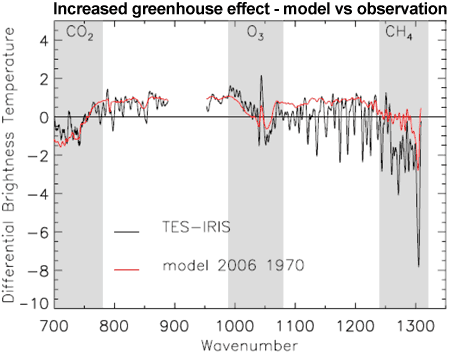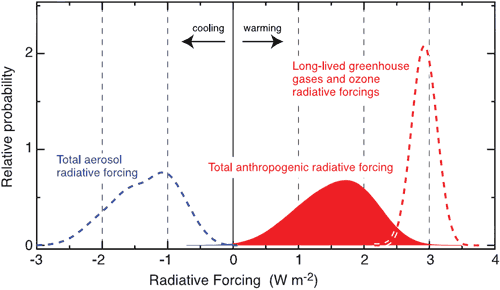 Arguments
Arguments
 Software
Software
 Resources
Comments
Resources
Comments
 The Consensus Project
The Consensus Project
 Translations
Translations
 About
Support
About
Support


Latest Posts
- Skeptical Science New Research for Week #28 2025
- Trump just gave a huge gift to China’s economy
- Fact brief - Is global warming just due to El Niño?
- The great acceleration debate
- 2025 SkS Weekly Climate Change & Global Warming News Roundup #27
- Skeptical Science New Research for Week #27 2025
- Take advantage of these tax credits before Congress kills them
- Fact brief - Are human CO2 emissions driving current global warming?
- What do the latest WMO temperature projections imply for 1.5C?
- 2025 SkS Weekly Climate Change & Global Warming News Roundup #26
- Skeptical Science New Research for Week #26 2025
- You did it! Yale's 2025 extreme weather coverage is funded
- Rebutting 33 False Claims About Solar, Wind, and Electric Vehicles - Recap
- Climate Adam - Silencing Science: Trump's War on Our Climate
- 2025 SkS Weekly Climate Change & Global Warming News Roundup #25
- Fact brief - Is modern warming just a rebound from the Little Ice Age?
- Show your Stripes Day on June 21 2025
- Skeptical Science New Research for Week #25 2025
- The role of aerosol declines in recent warming
- Sabin 33 #33 - What is the effect of hot or cold weather on EVs?
- 10 ways that Trump’s tax bill would undermine his energy promises
- 2025 SkS Weekly Climate Change & Global Warming News Roundup #24
- Fact brief - Was 1934 the hottest year in the global record?
- Skeptical Science New Research for Week #24 2025
- Climate Adam: Is China Finally Changing Its Climate Ways?
- Sabin 33 #32 - Is range restriction a problem for EVs?
- The Trump EPA tried to bury some good news
- 2025 SkS Weekly Climate Change & Global Warming News Roundup #23
- Fact brief - Are CO2 measurements reliable?
- Skeptical Science New Research for Week #23 2025
Archived Rebuttal
This is the archived Intermediate rebuttal to the climate myth "The science isn't settled". Click here to view the latest rebuttal.
What the science says...
| Science is never 100% settled - science is about narrowing uncertainty. Different areas of science are understood with varying degrees of certainty. For example, we have a lower understanding of the effect of aerosols while we have a high understandi |
A common skeptic refrain is that "the science isn't settled", meaning there are still uncertainties in climate science and therefore action to cut CO2 emissions is premature. This line of argument betrays a fundamental misunderstanding of the nature of science. Firstly, it presumes science exists in a binary state - that science isn't settled until it crosses some imaginary line after which it's finally settled. On the contrary, science by its very nature is never 100% settled. Secondly, it presumes that poor understanding in one area invalidates good understanding in other areas. This is not the case. To properly answer the question, "is the science settled?", an understanding of how science works is first required.
Science is not about absolute proofs. It never reaches 100% certainty. This is the domain of mathematics and logic. Science is about improving our understanding by narrowing uncertainty. Different areas of science are understood with varying degrees of confidence. For example, while some areas of climate science are understood with high confidence, there are some areas understood with lower confidence, such as the effect on climate from atmospheric aerosols (liquid or solid particles suspended in the air). Aerosols cool climate by blocking sunlight. But they also serve as nuclei for condensation which leads to cloud formation. The question of the net effect of aerosols is one of the greater sources of uncertainty in climate science.
What do we know with high confidence? We have a high degree of confidence that humans are raising carbon dioxide levels in the atmosphere. The amount of CO2 emissions can be accurately calculated using international energy statistics (CDIAC). This is double checked using measurements of carbon isotopes in the atmosphere (Ghosh 2003). We can also triple check these results using observations of falling oxygen levels due to the burning of fossil fuels (Manning 2006). Multiple lines of empirical evidence increase our confidence that humans are responsible for rising CO2 levels.
We also have a high degree of confidence in the amount of heat trapped by increased carbon dioxide and other greenhouse gases. This is otherwise known as radiative forcing, a disturbance in the planet's energy balance. We can calculate with relatively high accuracy how much heat is trapped by greenhouse gases using line-by-line models which determine infrared radiation absorption at each wavelength of the infrared spectrum. The model results can then be directly compared to satellite observations which measure the change in infrared radiation escaping to space. What we find in Figure 1 is the observed increased greenhouse effect (black line) is consistent with theoretical expectations (red line) (Chen 2007). These results can also be double checked by surface measurements that observe more infrared radiation returning to Earth at greenhouse gas wavelengths (Evans 2006). Again, independent observations raise our confidence in the increased greenhouse effect.

Figure 1: Increased greenhouse effect from 1970 to 2006. Black line is satellite observations. Red line is modelled results (Chen 2007).
So we have a lower understanding of aerosol forcing and a higher understanding of greenhouse gas forcing. This contrast is reflected in Figure 2 which displays the probability of the radiative forcing from greenhouse gases (dashed red line) and aerosol forcing (dashed blue line). Greenhouse gas forcing has a much higher probability constrained to a narrow uncertainty range. Conversely, the aerosol forcing has a lower probability and is spread over a broader uncertainty range.

Figure 2: Probability distribution functions (PDFs) from man-made forcings. Greenhouse gases are the dashed red curve. Aerosol forcings (direct and indirect cloud albedo) are the blue dashed curve. The total man-made forcing is the solid red curve (IPCC AR4 Figure 2.20b)
The important point to make here is that a lower understanding of aerosols doesn't invalidate our higher understanding of the warming effect of increased greenhouse gases. Poorly understood aspects of climate change do not change the fact that a great deal of climate science is well understood. To argue that the 5% that is poorly understood disproves the 95% that is well understood betrays an incorrect understanding of the nature of science.
Updated on 2010-07-09 by John Cook.
THE ESCALATOR

(free to republish)
























































